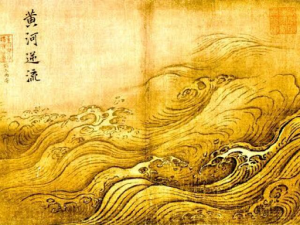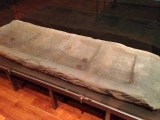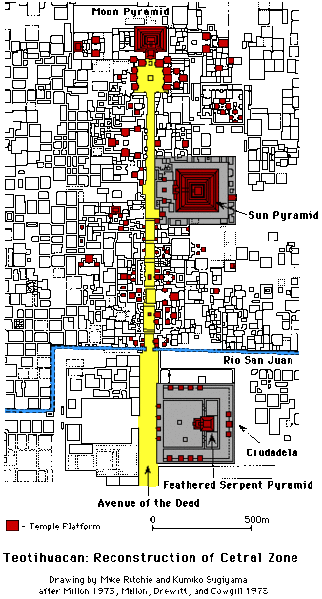 What reality lay behind ancient China’s flood legends? Who was the Yellow Emperor? Who was Archer Yi, what was his vermilion bow, how did he shoot down nine of ten suns, and why were there ten suns in the first place?
What reality lay behind ancient China’s flood legends? Who was the Yellow Emperor? Who was Archer Yi, what was his vermilion bow, how did he shoot down nine of ten suns, and why were there ten suns in the first place?
We now know the answers to these and other questions about ancient China. These answers can lead us to a new understanding of Chinese history, of the worldwide Bronze Age catastrophes, and of the history of climate change. (Ma Yuan, The Yellow River Breaches Its Course, Wikimedia Commons)
Catastrophes and Climate Change in Ancient China — PDF
Kenneth J. Dillon and Miao Li
Addendum: The “stone ladders” of Taidong,  Taiwan (Kai Hofmann, www.megalithic.co.uk) appear to have been earthquake/tsunami warning devices. They have a parallel in Teotihuacan, Mexico. In Teotihuacan the Avenue of the Dead (image from Wikipedia) contains a gradually ascending series of large, dry basins.
Taiwan (Kai Hofmann, www.megalithic.co.uk) appear to have been earthquake/tsunami warning devices. They have a parallel in Teotihuacan, Mexico. In Teotihuacan the Avenue of the Dead (image from Wikipedia) contains a gradually ascending series of large, dry basins. According to an anonymous engineer, they were intended to be filled with water and serve as an earthquake warning device. So, too, in Taidong the approximately 15 much smaller stone ladder-basins were apparently sequenced so that water would flow slowly and evenly from one to another–except when disrupted by a foreshock. While local earthquakes were a concern in Taiwan, tsunamis such as the enormous ones during the Bronze Age catastrophes were likely much more dreaded. The ladder-basins may have been able to detect seaquakes far to the south and east, providing precious warning time to head for high ground before tsunamis arrived.
According to an anonymous engineer, they were intended to be filled with water and serve as an earthquake warning device. So, too, in Taidong the approximately 15 much smaller stone ladder-basins were apparently sequenced so that water would flow slowly and evenly from one to another–except when disrupted by a foreshock. While local earthquakes were a concern in Taiwan, tsunamis such as the enormous ones during the Bronze Age catastrophes were likely much more dreaded. The ladder-basins may have been able to detect seaquakes far to the south and east, providing precious warning time to head for high ground before tsunamis arrived.
*****
Dillon’s Rosemarie (Washington, D.C.: Scientia Press, 2021) is a novel of discovery science that includes Earth science relevant to the Bronze Age catastrophes.

